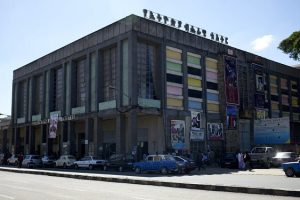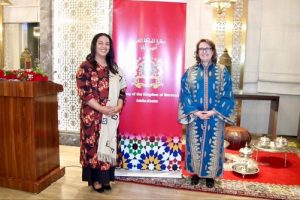BY MULUGTA GUDETA
Last week’s award ceremony organized by the Ministry of Culture to honor Ethiopian artists is the second such government sponsored event in a matter of a year or two. The first one was awarded by PM Abiy Ahmed last year as recognition to veteran writers who, according to the Premier’s words, rendered a lifetime service to their country and society.
However, that particular award ceremony was comparatively narrower in its scope and purpose than last week’s event. The first award mainly put the spotlight on veteran writers. Last week’s award ceremony was broader in its reach and diversity as it included young and older artists engaged in such rare subjects as dancing, painting, sculpting, circus show, composing music, cinematography, stage drama and so on.
What came to my mind when I was watching on TV the award ceremony sponsored by the Ministry of Culture, was that most honorees were past their primes while youngsters were in the minority and mainly engaged in the art of satire and dancing. There were also people in the middle who belong to both the middle-aged and the older generations of artists. If we go by the records of history, the Haile Sellassie 1st Prize, was the first modern award system in our country that focused mostly on young artists, like Tsegaye G/Medhin who won the prize even before he wrote his most prominent works.
Awarding medals for great achievements in wars, literature, arts and culture in general started under Emperor Haile Selassie back in the 1840s. According to available information, “The Haile Selassie I Medal of War: instituted by Emperor Haile Selassie I as a military decoration to reward gallantry and distinguished service during war “Awarded in a single class (bronze), with further awards signified by a bronze palm leaf worn on the medal ribbon.”
The arts and science awards were instituted in the 1960 to encourage excellence in various fields of studies. “The objective of the Haile Selassie Prize Trust, as defined in the original charter of 1963, consisted of the promotion of excellence in such diverse fields as African and Ethiopian studies, Amharic literature, the fine arts, industry, agriculture and humanitarian activities.”
The Derg had tried to imitate the Soviet award system by focusing on workers and war heroes rather than on artists although the latter too received quite a remarkable attention by the regime’s propaganda department. That led to the emergence of prominent musicians, dancers and dramatists who were teenagers or in their early twenties at that time and matured in the 198s and 1990s. Socialist ideology that was embraced by the Derg encouraged youth in particular shining and carrying forward the revolutionary ideals. However this was short lived and now completely abandoned.
The EPRDF regime on the other hand tried to encourage what it called “developmental art” but it did so under another illusion, which was a bad imitation of a caricature of what the Soviets called proletarian art that did not take them to the planned kingdom of plenty and crumbled after eight or nine decades. Yet, developmental art was not embraced by everyone in the art establishment. There was a muted debate between those who advocated the point of view of art for art’s sake and those who wanted to use art to bring about economic development. Although it is not crystal clear as to who won the day, it is clear now that state art has not created happiness or material wellbeing for most people.
Why different governments adopt different awarding systems is in itself something that requires objective research or serious investigation. However the fact remains that the governments that came after Haile Sellasie’s monarchy have more or less continued the tradition of awarding prizes and granting recognitions to artists who often survived and worked under extremely difficult conditions. They often struggled without reliable income or support from any quarter except the meager pensions some of them received in their old ages. The history of some of the most prominent Ethiopian artists is thus a history of misery and tragedy.
Abe Gubegna, the most fearless and talented writer lived and died under tragic situations. He was exiled several times by the Haile Sellasie government and allegedly killed by the Derg under mysterious circumstances. Bealu Girma, Ethiopia’s foremost modern novelist was a civil servant who later on fell out of favor with the Derg regime and lost his life under equally mysterious circumstances. Mengistu Lemma, the classic Ethiopian poet and dramatist lived like a prince as far as his career was concerned but died like a pauper, according to the accounts of his admirers and former students.
The same fate has befell many musicians, the last example being the extremely talented and hardworking and extremely popular composer Elias Melka who lived and died under horrible conditions, undermined as he was by illness and loneliness. He was hugely popular but never received awards or official recognition. The list can be long. It should be remembered that awards are not only granted to living artists. They are also bestowed upon distinguished writers or musicians after they pass away; that is to say posthumously as they do it in other countries.
This is not however to say that awards could have made their lives better or saved them from early demise. But getting official recognition could have boosted their morale and given them the realization that their lives and struggles had not been in vain and made their survivors proud of them. In this sense, the awards given to veteran artists last week by the Ministry of Culture should be welcomed as at least a small comfort to the aging artists who were once healthy, vibrant and energetic. Younger artists will certainly benefit most from the award that came at an early phase of their careers. They have all their lives before them and they can work harder to achieve still higher levels of development in their careers. And when they will attain mature old age they can look back at their artistic lives and be proud at leaving their legacies to the next generations. That is the whole purpose of honors and awards: they are about recognition at present and legacy for the future. However, if we go by past records many promising artists have also disappeared in their primes without living up to public expectations.
The problem with the awarding system in Ethiopia for artists of all ages is that the events are not regularly staged. In the past there had been many such events that disappeared after a couple of years. What the domestic artistic community needs is an established system or institution for awarding prizes and giving recognition to deserving personalities on a regular basis. The existing artistic institutions like filmmakers, writers’, journalists’ and other associations can come together and discuss the modalities and establishment of a national awarding system with its headquarters, permanent workers and the financial, technical and technological trappings that such a national project entails.
The budget for such an institution can come from public donations, government support and a fixed portion of incomes from book publishers, filmmakers and musicians that would cover the running costs of a national award institution. As we observed on many occasions in the past, the awardees or honorees do not, as a rule receive money prizes. They are given what look like small statuettes together with diploma of recognition for their lifelong efforts. A consolidated award institution might even go as far as giving money prizes to the winners every year and the winning artists will greatly benefit from the money to promote their activities or solve personal problems.
As a final word, we can say that winning awards is not the end of the road for artists. In soccer, you may hang your boots but writers don’t “hang their pens” quite easily. In sports, there is a point in your career beyond which your body cannot work as it did in the past. This is not so in arts. Artists cannot live a happy life unless they read and write every day. This is the rule in the profession. There are many stories of artists who stopped working a day or two before they passed away or those who died at the easels or tables. There is still life for artists after the awards. We hope that many of them who won this year’s awards would not disappear in the obscurity or oblivion they once belong to. Age is an asset and not a liability for the good artist.
The Ethiopian Herald 17 July 2022





